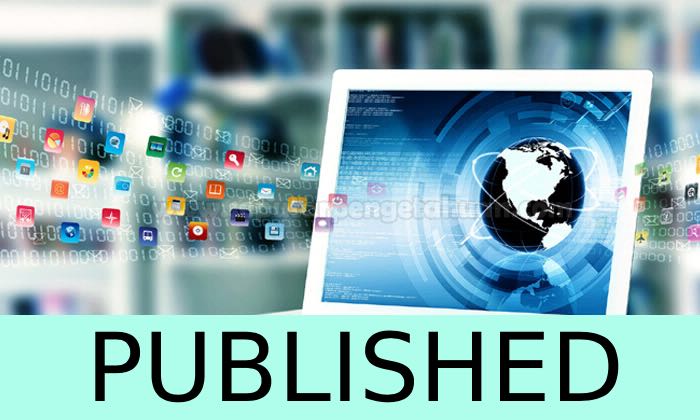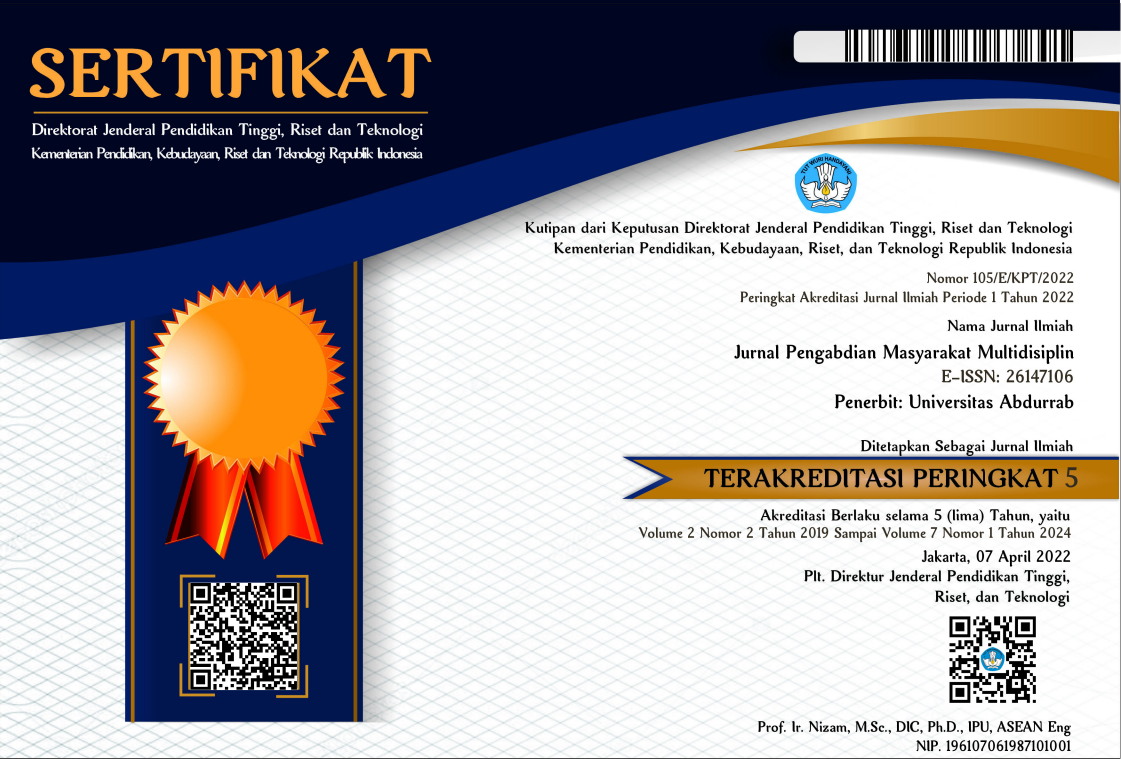INCREASING COMMUNITY AWARENESS TOWARDS HALAL AND THAYYIB PRODUCTS
DOI:
https://doi.org/10.36341/jpm.v6i1.2655Keywords:
Halal, Thayyib, Halal ProductAbstract
Halal products generally can be seen from the Halal Certificate and or Halal Label on the product packaging. However, halal products often are sold with products that have not been guaranteed to the Halal in one place of display such as in supermarkets or the market, so it can’t be known the halalness of the product. To know halal and thayyib products, knowledge of foodstuffs are classified as halal and thayyib is needed. The purpose of this Community Service (PKM) activity is to socialize and educate related halal and thayyib products, the ingredients used in the product manufacturing process, and the halal critical point of each ingredient and or product. This form of activity is in the form of education and socialization about halal and thayyib materials and or products that enter, circulate, and be traded in the territory of Indonesia. To see the success rate and satisfaction of participants in this PKM activity are done through pretest, posttest, and questionnaire. The result of this PKM is that the participants can understand that the products that enter, circulate, and are traded in the territory of Indonesia are syubhat, so they must be halal certified. In addition, the participants of the PKM program can know and or distinguish what ingredients or products are halal or haram, as well as which are thayyib and which are not thayyib.
Downloads
Downloads
Published
How to Cite
Issue
Section
License
1. Copyright of all journal manuscripts is held by the Jurnal Pengabdian Masyarakat Multidisiplin.Formal legal provisions to access digital articles of electronic journal are subject to the provision of the Creative
2. Commons Attribution-ShareAlike license (CC BY-NC-SA), which means that Jurnal Pengabdian Masyarakat Multidisiplin is rightful to keep, transfer media/format, manage in the form of databases, maintain, and
3. publish articles.Published manuscripts both printed and electronic are open access for educational, research, and library purposes. Additionally, the editorial board is not responsible for any violations of copyright law.
licensed under a Creative Commons Attribution-ShareAlike 4.0 International License.







